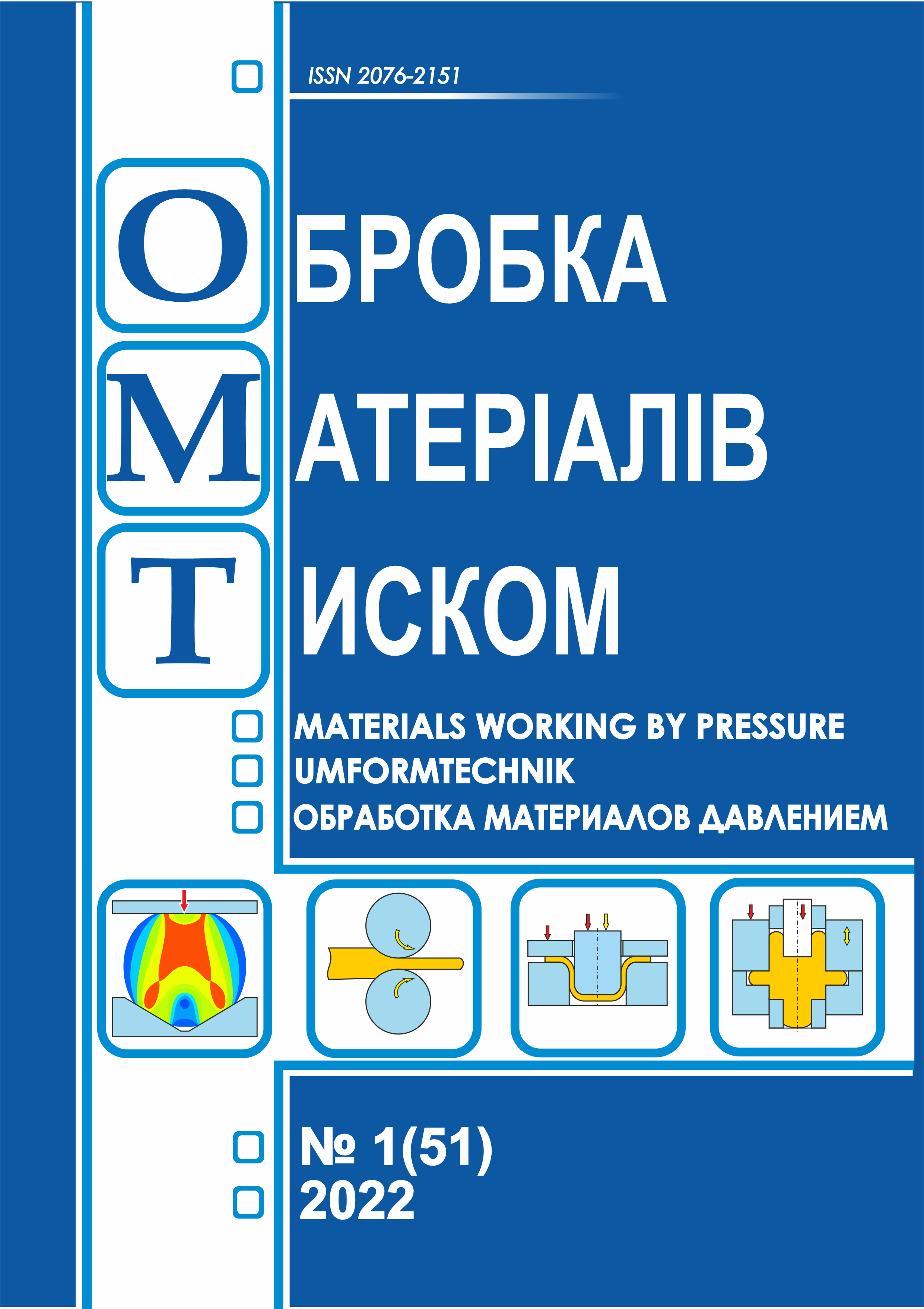Improvement of forging titanium alloys technology at the «Dnepropress Steel» Co.Ltd.
DOI:
https://doi.org/10.37142/2076-2151/2022-1(51)80Keywords:
forging technology, titanium alloys, tube billets, micro- and macrostructure.Abstract
Medvedev M., Bobukh O., Kuzmina O., Samsonenko A. Improvement of forging titanium alloys technology at the «Dnepropress Steel» Co.Ltd.
The article is devoted to the improvement of the titanium forging process under the conditions of Dnipropres Steel LLC. In the production of pipe billets from nickel and titanium alloys, forging of round ingots with a diameter of 350-950 mm obtained by the method of vacuum-arc or electron-beam melting is widely used. During forging of these ingots there is a significant unevenness of deformation along the cross-section of the forging, which affects the resulting structure and mechanical properties of semi-finished products, which in turn significantly limits the technological possibilities of their processing. According to the previous technology of forging of a pipe billet from titanium alloy of Grade 2 (domestic analogue of VT1-0), it consisted in drawing of a billet Ø 630 mm with a length of 1300-1500 mm in three passes with intermediate heating. According to the results of the study of the quality of the metal template, it was determined that the macrostructure of the forging is heterogeneous in the cross section, there are zones with different grain sizes and different etching. Inside the grain of the forging, there are large accessible allocations of the α-phase with a clear boundary between the zones, which can be negatively affected during extrusion, as it leads to the formation of cracks and delaminations.
To improve the structure and mechanical properties that ensure the production of defect-free hot-extruded pipes, it is proposed to improve the technological process of forging in the conditions of OJSC "Dnipropres Steel" by changing the deformation parameters and additional operations. Analysis of the results of forging ingots according to the proposed regime and metallographic studies of the quality of the metal of the pipe billet showed that the metal throughout the cross-section has a dense macrostructure of the 5th grade, a microstructure of the 3rd type, Brinell hardness 185-196 HB, which subsequently ensures defect-free extrusion of the pipe billets and their subsequent cold rolling to obtain mechanical properties that meet the requirements of the ASTM B 338-91a "Standard Specification for Seamless and Welded Titanium and Titanium Alloy Pipes for Condensers and Heat Exchangers".

